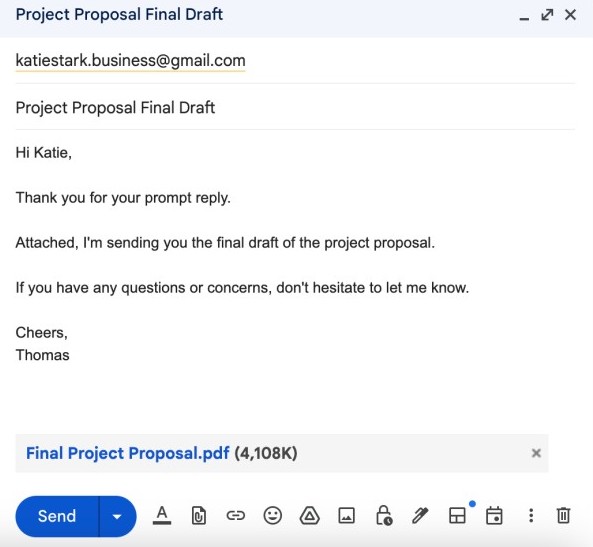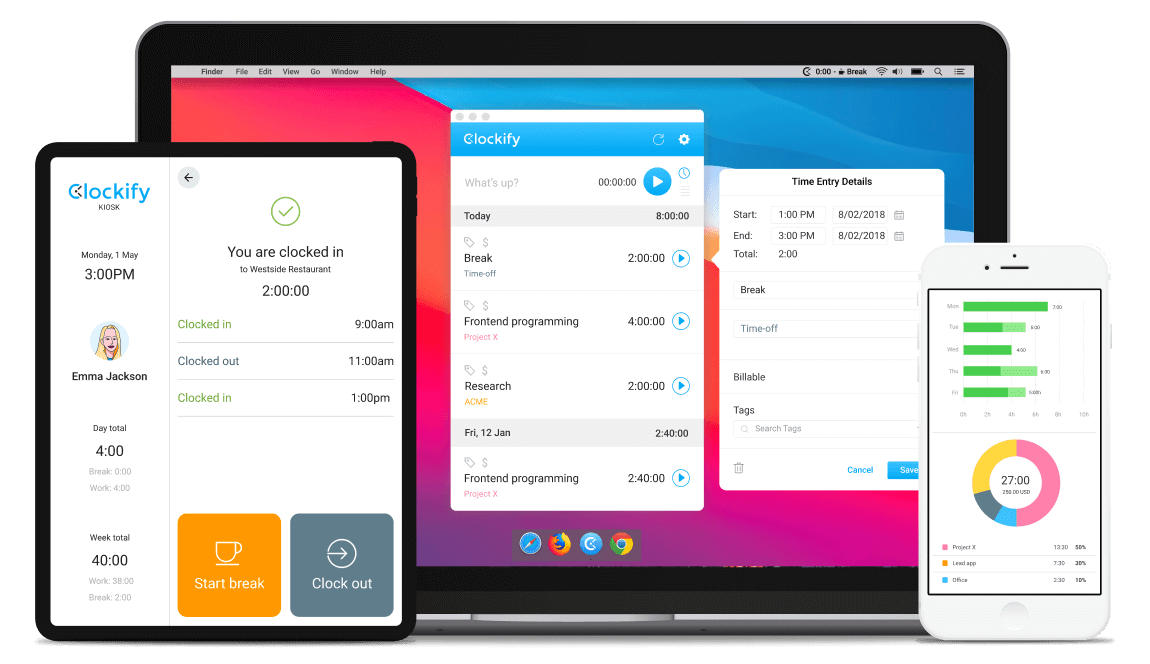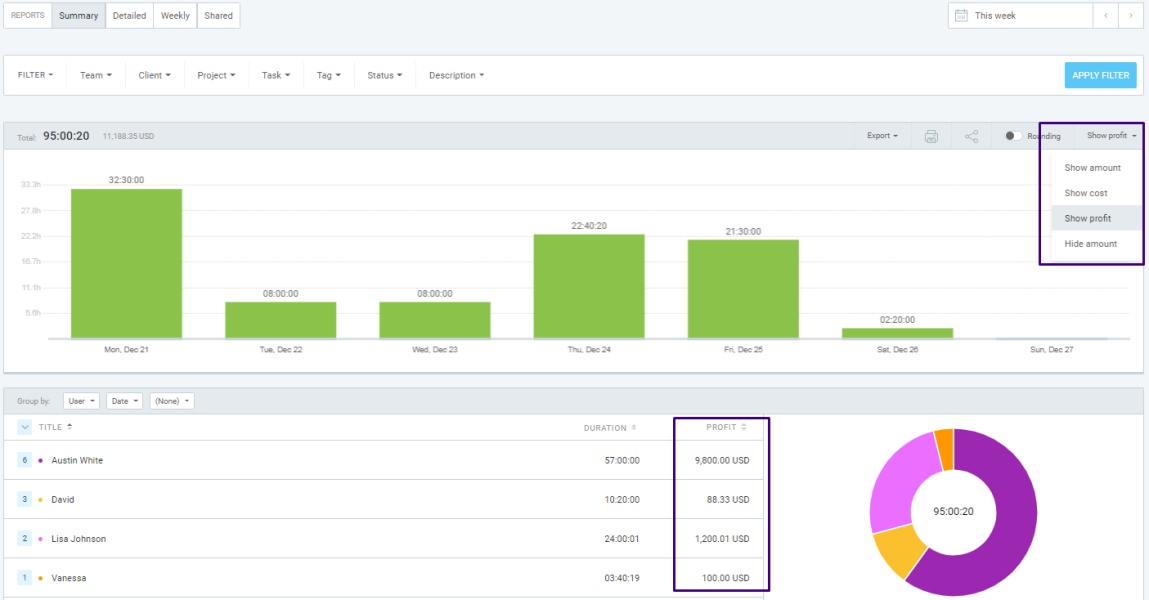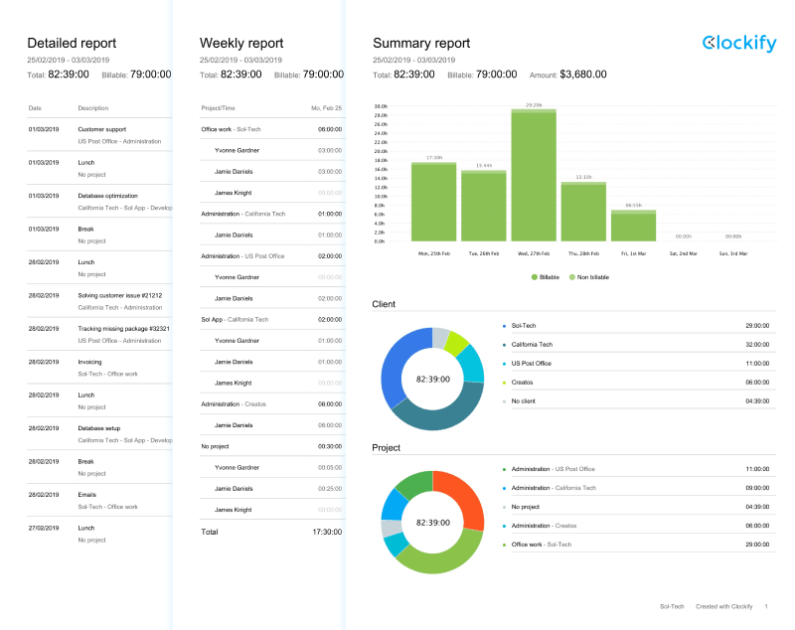Did you notice a shift in your workers’ productivity or are you just looking for ways to maximize productivity at your company?
The most important element of a company are its employees. After all, productive employees are what makes a company successful in the first place.
Therefore, keep reading to learn:
- What employee productivity is,
- How you can measure productivity, and
- How you can increase employee productivity in your workplace.

Table of Contents
What is employee productivity?
Employee productivity, also known as productivity in the workplace or workplace productivity, is the measure of each employee’s output.
The president of Florida Healthcare Insurance, Evan Tunis, defines workplace productivity as being both efficient and effective to achieve success in work:

“It’s a combination of how efficiently and effectively your team completes tasks that leads to successful outcomes.”
For example, a company that produces artistic bottles would want to know how many artistic bottles one employee can manufacture in a specific time period. This number presents the individual employee’s output.
Many people confuse employee productivity with labor (workforce) productivity. But, these terms are not the same.
As defined by the US Bureau of Labor Statistics, labor productivity is the real economic output of a country or company per labor hour.
💡 Clockify Pro Tip
Productivity and efficiency go hand in hand, but they don’t have the same meaning. Learn more about these terms and the differences between them here:
How to improve employee productivity in the workplace?
Employee productivity can typically be increased by focusing on the 5 factors we’ve previously mentioned. The easiest way to improve those productivity factors is to incorporate some or all of the following tips:
- Improving workplace conditions,
- Optimizing emailing,
- Optimizing meetings,
- Allowing flexible schedules,
- Removing tech distractions,
- Coming up with better incentives,
- Providing better employee training,
- Refraining from micromanaging,
- Improving office communication, and
- Encouraging self-care.
Let’s break down each tip into more detail.
Tip #1: Improve workplace conditions
A 2020 study published in Cogent Business & Management (an open-access journal) explored the relationship between work conditions and job satisfaction. Researchers found a positive correlation between work conditions and job performance. Namely, positive working conditions will get you higher job satisfaction among employees and improve their performance as a result.
Enhance productivity with Clockify
The president of WorkSmart Systems, Matt Thomas, believes offices should be inspiring to employees:

“Since most employees spend eight or more hours a day in the office, it is important for businesses to be aware of how an office setup can influence and inspire their workers.”
So, if you want to make your employees productive, you need to make sure they’re working in optimal conditions. Here are some ideas.
Add natural light
According to a study by Dr. Alan Hedge, employees who work in an office with plenty of natural light report a 2% increase in productivity. Even though it may sound insignificant at first sight, that’s $100,000 in value for every 100 workers per year!
Furthermore, the same study shows employees working in offices with natural light report:
- Fewer headaches,
- Less eye strain, and
- Decreased fatigue.
Include plant life in the office
Green offices make employees more comfortable and thus more productive with their work.
A 2021 survey published by the Flower Council of Holland shows that 70% of people believe plants improve the workplace atmosphere.
Moreover, 63% of survey participants claim plants improve their workplace surroundings, while 58% say they have a “calming effect on their eyes”. What’s more, 31% of people believe that plants increase their concentration.
Repaint office walls
Studies have shown that colors can have an effect on our mood, too.
A well-known study called Office Wall Color: An Assessment of Spaciousness and Preference explored the best color choices for office spaces. It showed that red was the worst choice for office walls, as most of the study participants found it unpleasant.
On the other hand, white was the most popular option, with 53.2% of participants finding it appropriate for office. Popular white alternatives were beige, which was chosen by 14.7% of participants, and gray, chosen by 7.3% of respondents.
In case you’re looking to add more color to the space, the study suggests considering blue or green for office walls, too.
Reduce the noise
A recent study on associative patterns between workplace sound level and physiological well-being found that office noise has a negative impact on workers’ health and wellbeing. According to the study, a noisy work environment can affect:
- Productivity,
- Mood, and
- Psychological state.
As an employer, you can create official guidelines that outline the rules for noise in the workplace. You could prohibit meetings in common areas or urge workers to avoid scheduling meetings during specific hours to allow other employees to work in silence during that time.
In addition, you could soundproof offices to prevent other employees from being distracted by sounds from other rooms. If that’s too big an investment, a white noise machine may do the trick.
Update the equipment
Updating your office equipment and ensuring your employees have enough supplies will certainly help your workers perform their jobs more efficiently.
Tunis believes investing in technology affects productivity, collaboration, and business success:

“Technology plays a vital role in the workplace, providing employees with access to the right tools and resources that empower them to work efficiently. From advanced software applications to state-of-the-art equipment, having the appropriate technological infrastructure in place can significantly enhance productivity, collaboration, and overall business success.”
A 2015 study on the impact of office supplies on effectiveness and productivity showed a correlation between effectiveness and productivity and the quality of office supplies.
Namely, workers in well-supplied offices have higher levels of productivity and effectiveness. This correlation is particularly apparent in smaller and medium businesses.
In addition, another study on a similar topic found that productivity is maximized in spaces with modern office equipment. It also noted that offices with sufficient and quality supplies had workers with a more positive attitude to work.
Enhance productivity with Clockify
Establish a common area
Having a space outside of the regular working area provides a nice change of scenery for your employees. They can use this space to rewind and bond with their co-workers in a less formal environment.
Thomas recommends employers make this common area cozy and comfortable:

“Creating assigned spaces around the office that serve a variety of purposes can help employees break out of their afternoon slump. These specific spaces should also include comfortable pieces of furniture like couches or sitting chairs to help create a cozy and enjoyable space.”
Tip #2: Optimize emailing
Emails waste more time than you might think! A recent survey by Atlassian showed that workers need 16 minutes to regain focus after handling an email they received.
Thus, it’s essential that you optimize emailing to avoid time waste. Here are some things you can do.
Keep emails organized, short, and on-point
Instruct your employees to organize their emails to avoid distractions.
When writing an email, you should be as precise and straightforward as possible.

As you can see from the screenshot above, this example includes all of the relevant information (reason for writing an email, informative subject line, and the attachment), while being concise.
Tip #3: Optimize meetings
According to the Atlassian survey we mentioned, employees spend 31 hours per month on unproductive meetings.
The same survey found workers believe half of the time spent in meetings is wasted.
Haselberger advises removing “information only” meetings:

“Most of the time the real work is not done in the meetings and meetings are inefficient. Start by removing all “information only” meetings, like status updates. This type of information can be disseminated asynchronously.”
Here are some easy things you can do to optimize meetings in your organization.
Switch to emails when possible
Email is a faster and more precise means of communication.
So, instead of holding countless meetings, blast a group email during your time-blocked hour dedicated to emails.
Reduce the number of meetings and time spent
Hold only the essential meetings.
Furthermore, make sure your meetings are effective and just long enough for you to cover the most important points.
Reduce the number of meeting attendees
Some employees may be vital for your meetings, but others who aren’t shouldn’t be obliged to attend every time.
Instead, the most productive solution is to have them continue with their usual line of work.
Tip #4: Allow flexible schedules
Different people have different productivity prime times during the day.
So, sticking to a strict 9-to-5 schedule, or working hard from the earliest hours of the morning may not work for everyone.
A recent McKinsey American Opportunity Survey showed that 65% of US employees would like to work remotely full-time. In addition, 58% of workers feel more productive when they work outside of the office.
If you suspect this kind of flexibility will be too difficult to manage, you can always use a time-tracking tool such as Clockify, which lets you easily track the work hours of your employees.

Aside from tracking work hours, Clockify allows you to:
- Set work timers,
- Organize projects, and
- Generate and export logged time reports.
Now that you know how easy it is to introduce more flexibility in your business, let’s go over some options you can offer to your employees.
Make the work hours flexible
Instead of working 8 continuous hours per day, let your employees work in two smaller time blocks.
For example, let them clock in from 7 a.m. to 1 p.m., go to the gym/long lunch, and then finish their workday from 3 p.m. to 5 p.m.
They’ll feel more productive and efficient as they’ll get a fresh surge of energy after the long, fulfilling 2-hour break, and avoid the dreaded afternoon slump employees tend to feel before “closing” time.
The founder of SpareMyTime, Melissa Gauge, found that flexibility leads to loyalty and less staff turnover:

“Our employees value flexibility in balancing work and personal life commitments. We have found it helps foster loyalty and reduces staff turnover.”
Allow remote work
In spite of some remote work challenges, 87% of American workers would take the opportunity of flexible work, according to the McKinsey survey we mentioned. You could give your employees an opportunity to work remotely full-time, or you can offer an alternative, hybrid work schedule.
For instance, the same survey found that 23% of US employees had the option to work partially or fully remotely in 2022.
💡 Clockify Pro Tip
Switching to remote working can be a huge challenge for the management. These tips should help you with this transition:
Tip #5: Remove tech distractions
An older but relevant 2016 study by CareerBuilder highlighted cell phone use as the number 1 productivity killer.
According to this study, 55% of employees are distracted by their phones. Spending time on the Internet is distracting 41% of workers, while social media is a distraction for 37% of employees.
The following tips will help you easily deal with tech distractions in your workplace.
Keep your employees informed about tech distractions
Your employees may not even be aware of how distracting their phones can be.
Instead of prohibiting the use of cell phones completely, you could share some insightful workplace distraction statistics so your workers can understand how distracting social media and internet use are. You could also encourage your employees to set specific times during their workdays for checking their phones.
Try website blockers
Website blockers enable you to create a blacklist of different websites that may distract your employees and disrupt their productivity.
You can choose to prevent your workers from accessing specific sites completely or set a specific time of day they won’t be able to access them.
Tip #6: Come up with better incentives
Incentives keep your employees motivated and eager to perform their jobs efficiently. They are also a great way to attract and retain top talent.
Incentives can be anything from monetary bonuses to vacation days and gifts.
In a study by the Incentive Research Foundation, employees ranked their most favorable tangible rewards. The list goes like this:
- Cash,
- Gift cards,
- Gifts,
- Individual travel,
- Non-travel expenses, and
- Group travel.
If you aren’t sure what kind of incentives you can offer, you can always ask your employees!
The 2019 Compensation Best Practices Report showed that top-performing organizations frequently organize market studies to ensure their workers are satisfied. In fact, 58% of top performers completed a market study in the past year.
In case you’re open to introducing more benefits, you have plenty of options to choose from. Here’s what research says about each of them.
Track performance with Clockify
Offer performance-based bonuses
The same report on compensation and best practices showed that top-performing organizations give bonuses more frequently than regular performers. As much as 34% of those organizations give incentives or bonuses every 3 months.
Furthermore, 64% of top performers opt for larger pay increases as a reward to their best employees.
Improve benefits
Aside from monetary incentives, you could offer your workers great perks to increase their satisfaction.
Popular work benefits may include:
- Additional days off,
- Company merchandise,
- Personalized rewards,
- Equipment for home office, or
- Health and wellness reimbursement.
Recognize employee accomplishments
Studies show that employees like to know that their hard work is appreciated.
In fact, a Bonusly survey found that 46% of US employees quit because they didn’t feel appreciated at their job. Moreover, 65% of survey respondents would be motivated to work harder if their work was appreciated by the management.
What’s more, a report on employee wellbeing by Workhuman and Gallup highlighted recognition as one of the best ways to improve workers’ wellbeing. According to this report, recognition:
- Reduces burnout levels,
- Increases engagement, and
- Improves company loyalty.
So, recognizing your employees’ hard work and being appreciative of their input is essential for increasing productivity.
Tip #7: Provide better employee training
Training and development help improve employee knowledge and their work performance, by extension.
Research published by the Noble International Journal of Business and Management Research found that employees believe job training:
- Improves skills,
- Increases knowledge and abilities, and
- Leads to job satisfaction.
You should pay special attention to training your leadership. The co-founder and CMO of NCHC, Logan Nguyen, believes providing your managers with training affects the productivity of all your employees, among other things:

“Good leadership has an impact on employee productivity. How managers interact with employees affects employee performance. A good working relationship between the two parties can lead to improved performance, high engagement levels, and increased job satisfaction. Companies can help leaders become better managers by providing them with the tools and training needed to succeed.”
Provide hands-on training
This type of training lets the employees test out the efficacy of certain training tasks by giving them the opportunity to try them as they learn about them.
While there aren’t many studies that demonstrate the importance of hands-on job training, hands-on learning is proven to be extremely effective.
For instance, a study on active learning showed that students who didn’t engage in hands-on learning had a 1.5 times higher chance to fail a course than those who did.
Allow employees to learn at their own pace
Self-paced learning has been shown to significantly increase memory performance. Rushing through complicated topics won’t allow new knowledge to stick, or employees to test out their newfound skills.
So, you should give your employees some time to process everything they learned and test it out in practice.
Schedule employee training with Clockify
Tip #8: Stop micromanaging
Many managers cannot let go of tasks they’ve given to others. So, they micromanage every detail, rendering task delegation pointless.
According to the 2023 Work in America survey, 42% of workers feel micromanaged at their workplace. Employees who are micromanaged are 28% more likely to feel stressed or tense during their day.
Here’s how to prevent micromanaging in your company.
Manage expectations and requirements
If you’re looking for a specific outcome, you’ll have to provide guidelines to your employees. You also need to let your employees know what you expect from them.
If your employees are more focused on their goal than the means of getting there, you’ll have less to worry about and micromanage.
Once you delegate, leave the room
Mona Al-Anazi, Human Resources Director of The City School Saudi, conducted research that found micromanagement to be extremely bad for business, as it reduces employee morale and efficiency.
Your employees will feel more independent, more relaxed, and more confident in their skills when a supervisor isn’t constantly looming over their heads.
Gauge agrees with this as her belief is that employees work best when given autonomy:

“Most employees blossom through greater autonomy. When employees feel empowered to work in a way that suits their preferences and needs, they are more likely to be motivated and perform at their best.”
Tip #9: Improve office communication
Good collaboration stems from good team connectivity, communication, and feedback (including performance reviews). In teamwork, good collaboration leads to optimal productivity and efficacy.
A recent survey by Forbes Advisor found that poor communication greatly affects employees. As a matter of fact, 49% of workers believe it affects their productivity, while 42% claim it affects their stress levels.
You can improve office communication using various methods. Here are the easiest ones.
Build teamwork purposefully
Productivity-rich teamwork doesn’t happen by accident. You and your team have to make an effort to become an effective team.
You can start by hosting casual get-togethers from time to time – throw an office party, initiate an employee outing, or organize a team-building paintball match.
When new employees arrive, make sure they feel welcome in the workplace, and equal with their new colleagues.
Find the ideal means of communication
Your company may use various communication methods. Your job is to learn how each employee replies best.
Some may reply quickly to messages, some to email messages, and some are prompt in answering their phones.
Tip #10: Encourage self-care
Encouraging employees to take care of themselves goes a long way in encouraging employees to care about their tasks and projects.
A 2022 research published in the Journal of Work and Organizational Psychology showcased a positive correlation between self-care and job satisfaction. It showed that employees who enjoyed self-care activities were less stressed and were more satisfied at work and in life in general.
Tunis had something to share on this matter too and highlighted the importance of employee well-being for productivity:

“Encouraging employees to take regular breaks, leave on time, and have a healthy work-life balance can go a long way in improving overall morale and productivity.”
Let’s go over the simplest ways to promote self-care to your employees.
Encourage the use of health insurance benefits
The above-mentioned Work in America survey found that 92% of employees believe it’s important to work in an organization that cares about their well-being and mental health. In addition, 72% of US employees believe their employer helps them develop and maintain a healthy lifestyle.
Making the most of your company benefits goes a long way in preventing burnout. Your job as an employer is to ensure your workers aren’t discouraged from using their available benefits.
So, you should make sure employees are aware of all the health benefits the company offers. Furthermore, frequently encourage your workers to use available full-physical exams, vaccinations, and other benefits.
Encourage the use of time off
According to the latest PTO statistics, as much as 46% of US employees don’t use the time off they earn.
Time off allows your workers to take a proper break as well as have a better work-life balance, which makes them much more satisfied and productive. Thus, regularly keep track of the time off your employees took and encourage them to use more days off if they haven’t for a while.
💡 Clockify Pro Tip
Want to create a good PTO policy for your company, but you aren’t sure what different types of time off mean and how they differ? Read this blog post:
Offer beneficial self-care courses
The same research from the Journal of Work and Organizational Psychology showed that employees who participated in a mindfulness program marked growth in their happiness, performance, and work engagement.
So, sign your employees up for different self-care courses. This helps them learn how to alleviate everyday stress, manage their time better, or learn any other useful self-care techniques.
How to measure employee productivity
To measure employee productivity, the first thing you need to do is define a standard in profit, goals, or quality, against which you’ll compare individual employee results.
You can determine employee productivity by measuring different elements, such as:
- Goals met,
- Profit,
- Amount of work completed,
- Quality of work completed, and
- Time spent.
You can measure productivity by examining one or a combination of these elements. Let’s explore each method in more detail.
Method #1: Measure goals met
Evidence you have high productivity: High number of goals met.
How do you measure it? You determine the number of goals per month your employees need to reach, and then you compare their monthly results with the number of goals you previously established. You can also set your goals and targets daily or weekly.
For example, you decide that each employee in your sales team should make 100 calls per month, 20 contacts, and 10 sales. If an employee is making 120 calls, but only 5 sales, they are not reaching the standard. In case an employee is making 80 calls, but 15 sales, they are beating the set sales standard. Despite them making fewer calls than anticipated, the employee reached the set sales goal.
Time management, productivity, and leadership coach Alexis Haselberger believes measuring goals is the best method for determining productivity levels:

“I think the best way to measure productivity is against goals. Define clear goals and outcomes and measure performance and productivity against these goals.”
Method #2: Measure profit
Evidence you have high productivity: High profit.
How do you measure it? You define the ideal annual profit for your company. Once you reach or top it, you’ve proven your employee productivity. If you fall short, your employees are not reaching their expected productivity percentage.
For instance, you can use the annual profits you generated in previous years and estimations for the current year to define the ideal annual profit for your business. Your ideal profit should not be set in stone as it’s always wise to leave some room for uncertainty. Then, once the year is over, you can compare the actual numbers to the ideal ones. Bear in mind that profit depends on various factors aside from your workers’ productivity.
In case you find measuring and tracking profits your employees generate difficult, you can always rely on a tool to make things much simpler.
For instance, Clockify’s labor cost & profit features allow you to track profits and costs, as well as generate reports to showcase your progress.

With Clockify, you can get a thorough overview of your team’s work. The tool allows you to see each employee’s progress and profit generated clearly and easily.
Method #3: Measure the amount of work completed
Evidence you have high productivity: A large number of tasks completed.
How do you measure it? You determine the number of tasks per week your employees need to complete, and then you compare their monthly results to this number.
The expert who helped us define productivity, Tunis, recommends using the “total output per hour” formula:

“There are formulas to calculate employee productivity. The most common is the “total output per hour” formula which takes into account how many items of work were completed in a given number of hours. This helps employers measure their team’s performance and identify areas that need improvement.”
After all, the goal is to complete all tasks at hand. If employees fail to do so, they might be struggling with reaching the desired productivity levels.
💡Clockify Pro Tip
Keeping track of projects and tasks can be time-consuming. These steps should make the process much easier:
Method #4: Measure the quality of work completed
Evidence you have high productivity: All projects, no matter their number, are completed in a quality way.
How do you measure it? You choose the parameters that define a completed project as a quality and successful one. Then, you determine how many of your finished projects live up to these parameters.
For example, when your employees are developing an app, the project is considered successful if the app is functional, fulfills all client requirements, and the client is satisfied.
Method #5: Measure time spent
Evidence you have high productivity: Less time spent working on a project.
How do you measure it? You set estimates for the time needed for the employees to finish all your project-related tasks and provide the client with a project deadline based on those estimates.
For instance, you can instruct your employees to track the time they spend on their tasks. If they finished before the deadline, your team was productive with their time (and schedule).
What are the key factors affecting employee productivity?
If you’re looking to increase employee productivity, these 5 key factors should be your primary focus, as they are the ones mostly affecting productivity in a workplace culture.
Factor #1: Communication
Clear and respectful communication between employers and their employees is among the most important factors of employee productivity. Disrespect is one of the clear signs of a toxic workplace, which is why you should always be mindful of how you’re communicating with your employees.
In addition, learning how to explain tasks and express your thoughts clearly allows your workers to fully understand their responsibilities, making it much easier for them to perform their jobs.
Tunis explains that effective communication is crucial for productivity, regardless of whether it’s in person or online:

“Clear communication between team members and managers is essential for achieving productivity goals. Whether it’s through emails, video conferences, or in-person meetings, effective communication can keep everyone on the same page and ensure tasks are carried out efficiently.”
Factor #2: Knowledge and training
When employees know how to perform their jobs, they are more productive.
A business Operations Consultant at Nina Ross Business Consulting, Nina Ross, advises employers to hire experienced people and create a well-thought-out onboarding process:

“Vet and hire employees who are experienced in the position in which they were hired. Create new hire orientation and onboarding processes to introduce new hires to the company and their job position. This should include, among other things, training new employees on how to achieve maximum productivity at the start of their tenure.”
Tunis further highlights the importance of adequate training for efficiency and productivity:

“Providing employees with adequate training helps them become better equipped to perform their jobs effectively. By investing in training, employers can ensure their team has the skills and knowledge they need to do their jobs with confidence and efficiency.”
Factor #3: Motivation
Motivated employees are productive employees!
Tunis notes that benefits and recognition are essential for having motivated employees:

“Having a motivated workforce is key to boosting productivity. This could mean offering incentives such as bonuses or flexible working arrangements, or simply recognizing employees for outstanding work.”
💡 Clockify Pro Tip
Struggling with motivation? Check out this guide:
Factor #4: Concentration
Low productivity is often a result of poor concentration.
The Owner and Principal Consultant at Tribble and Associates, Larry Tribble, believes creating a distraction-free work environment is crucial for increasing productivity:

“We know that the enemies of attention are distraction and interruption. So, when I advise managers of knowledge workers, I note that the best we can currently do is to create an environment that limits distraction and interruption.”
Factor #5: Well-being
Happy and satisfied employees are much more productive.
On that note, Tunis explains that employers should focus on both the physical and mental well-being of their employees:

“Taking care of the physical and mental well-being of employees is essential for ensuring their productivity. This could range from providing them with regular breaks to offering access to health benefits or wellness programs.”
Why is increasing employee productivity important?
The purpose of any company is to be successful — and we’ve already established that employee productivity can make or break the success of a company.
Two factors determine whether employees are successful at their work:
- Productivity — the amount of work completed, and
- Effectiveness — the amount of effort put into that work.
Some people may spend a lot of time finishing a small amount of work. These people are more effective than productive.
Other people may finish a lot of work in a small amount of time. These people are more productive than effective.
In an ideal situation, an employee makes the most out of both your productivity and your effectiveness. This means aiming to put maximum effort into the work and finishing as much work as they can in an as short amount of time as possible.
There are several benefits to fostering a culture of high employee productivity that prove its importance within an organization. If employees are productive, the business:
- Becomes more profitable,
- Grows,
- Meets consumer demand, and
- Remains competitive.
In gist, high employee productivity ensures your organization stays successful.
💡 Clockify Pro Tip
Good time management helps your employees become more productive and effective. The following text will provide you with useful time management tips, techniques, and other time management resources:
Increase employee productivity — with Clockify
You can measure the productivity of your workforce in many different ways. But one of the fastest and most reliable ones is to track how they manage their time.
You can use Clockify to assign projects to groups of workers and track employee productivity in the blink of an eye. Here’s how to create groups in Clockify:
- Visit the Team page,
- Open the Groups tab,
- Enter the name of the group in the field titled Add new group,
- Click Add to create a new group.
That’s it.
Now, you have a group of employees gathered according to their skills or departments, such as Developers, Support, or Designers.

Later, you can assign groups to projects and filter reports by groups to see who was on top of their game.
With a time tracking system like Clockify, you can also generate detailed, weekly, and summary reports. Here’s what they look like in action:

With these reports, Clockify allows you to:
- Pin down wasted time,
- Assess which tasks take longer to do, and
- Learn how much time employees spend on menial things.
If you’re tired of traditional methods for tracking employee productivity, that’s totally understandable. Luckily, we’ve created something that will make your life and work easier and boost profits and efficiency.



